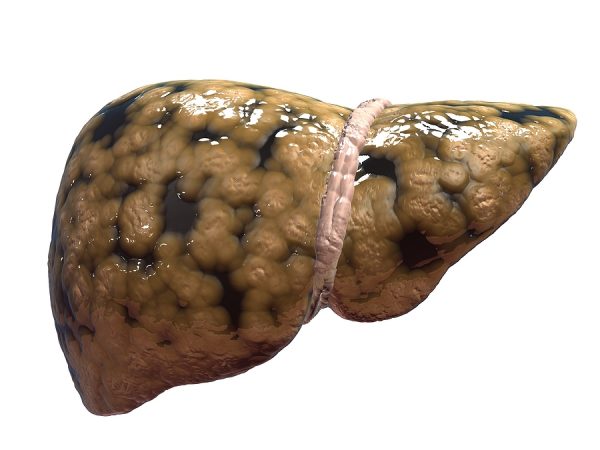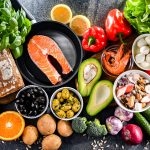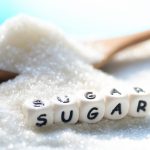When I first started practicing medicine, I didn’t see a lot of liver disease. When I did run across a case, it usually involved someone who was a heavy drinker. There really weren’t a lot of surprises.
Sadly, this is no longer true. We are seeing more and more cases of non-alcoholic fatty liver disease (NAFLD). In the past couple of decades, I’ve seen a huge uptick in this silent killer in my own practice. And people who don’t drink alcohol are very surprised when they get a fatty liver diagnosis.
NAFLD occurs when too much fat accumulates in the liver. Eventually, that fat buildup begins to affect liver function and damage the cells and tissue.
And here is a sobering statistic…
Today over 40% of the U.S. population has non-alcoholic fatty liver disease (NAFLD). To put this in perspective, only about 15% of people in the U.S. were estimated to have the disease in 2005.
On a person-to-person basis, this means the numbers jumped from one and a half persons out of ten having the disease in 2005 to more than four out of every ten today. That’s huge!
The explosive growth of this deadly disease is a horrible tragedy. And it comes with some very scary facts:
1 – It’s invisible. You can’t see it, and it’s unlikely you’ll feel any symptoms until serious problems set in.
2 – There is no conventional medical cure for NAFLD. Once you develop it, there aren’t any pills or special procedures that will fix you up.
3 – Non-alcoholic steatohepatitis (NASH), which occurs when NAFLD advances to liver cell damage, is the fastest growing indication for liver transplantation.
4 – Nobody’s really talking about it, so most people don’t even know they’re at risk for the disease until they’re diagnosed with it.
Fatter Bellies Lead to Fatter Livers
The explosion of NAFLD isn’t the only thing that has changed in the last several decades. During this time, there’s also been a steep rise in something called “visceral obesity.”
Simply put, this is the accumulation of fat around your abdominal area.
You might call it belly fat, your spare tire or your muffin top. But no matter what name you give it, this type of fat is very strongly linked to the development of fatty liver. It’s also very common among diabetics and people who eat a poor diet.
And it’s not hard to eat a poor diet! I shared news about that with you just a few weeks ago.
Today our food supply is loaded with unhealthy fats, added sugars, processed grains and other foods that play a crucial role in the development of visceral fat… especially high fructose corn syrup added as a sweetener to our diets since the mid-1970’s as a replacement for sucrose. We also don’t get nearly as much physical activity as we used to.
This creates the perfect storm for central obesity and fatty liver.
At the same time, keep in mind that there is no medical cure for NAFLD!
That’s right. Once you develop it, your doc isn’t going to be able to prescribe any magic pills or breakthrough surgery to fix you up.
However, this doesn’t mean there isn’t a way to get rid of all of the fat that’s clogging up your liver before it becomes a serious challenge.
Unclog Your Fatty Liver
It’s vitally important to take steps to drop excess pounds as soon as you can. You know you need to get plenty of physical activity. And you need to eat the right kinds of food (not the kind you get when you go on starvation or fad diets).
It’s much easier to get rid of processed, fatty, corn oil-laden and sugary foods that lead to weight gain and fatty liver. You can start by eating a Mediterranean-style diet. It’s simple. Just fill about 85% your food plate with organic-plant based foods. They’re the centerpiece. Then fill the remaining 15% with a clean-sourced meat or fish protein.
Top everything off with a splash of olive oil, zesty herbs, spices and tree nuts that are filled with anti-inflammatory properties.
I also recommend supporting your liver with four liver-supporting supplements:
- 420–600 mg of silymarin daily. This is an herbal extract of milk thistle that has a direct effect on inflammation and scarring in liver cells. Make sure it is standardized to 80 percent silymarin content.
- 500 mg of resveratrol for 12 weeks to reduce levels of damaging liver enzymes, cut down on inflammation and help release fat from liver cells.
- 250-750 mg of CDP choline (citicoline) daily. Start at the low end and work your way up to 750 mg each day in divided doses.
- 2,000 to 8,000 IU of vitamin D3 in the cholecalciferol form. (2,000 to maintain; 5,000 if your levels are slightly low; 8,000 for deficiency.) People with low levels of vitamin D are about 26% more likely to develop fatty liver than those with adequate levels. Have your doc retest every three months and adjust levels accordingly.
SOURCES:
Teng ML, Ng CH, Huang DQ, Chan KE, Tan DJ, Lim WH, Yang JD, Tan E, Muthiah MD. Global incidence and prevalence of nonalcoholic fatty liver disease. Clin Mol Hepatol. 2023 Feb;29(Suppl):S32-S42.
Perumpail BJ, Khan MA, Yoo ER, Cholankeril G, Kim D, Ahmed A. Clinical epidemiology and disease burden of nonalcoholic fatty liver disease. World J Gastroenterol. 2017 Dec 21;23(47):8263-8276.
Younossi ZM, Stepanova M, Ong J, Trimble G, AlQahtani S, Younossi I, Ahmed A, Racila A, Henry L. Nonalcoholic Steatohepatitis Is the Most Rapidly Increasing Indication for Liver Transplantation in the United States. Clin Gastroenterol Hepatol. 2021 Mar;19(3):580-589.e5.
Gillessen A, Schmidt HH. Silymarin as Supportive Treatment in Liver Diseases: A Narrative Review. Adv Ther. 2020 Apr;37(4):1279-1301.
Gillessen A, Angelico F, Chen J, Lu L, Lucena MI, et al. Silymarin for Treating Toxic Liver Disease: International Consensus Recommendations. Gastro Hep Advances. 2022;1(5)882-893.
Faghihzadeh F, Adibi P, Rafiei R, Hekmatdoost A. Resveratrol supplementation improves inflammatory biomarkers in patients with nonalcoholic fatty liver disease. Nutr Res. 2014 Oct;34(10):837-43.
Theodotou M, Fokianos K, Moniatis D, Kadlenic R, Chrysikou A, Aristotelous A, Mouzouridou A, Diakides J, Stavrou E. Effect of resveratrol on non-alcoholic fatty liver disease. Exp Ther Med. 2019 Jul;18(1):559-565.
Chai C, Chen L, Deng MG, Liang Y, Liu F, Nie JQ. Dietary choline intake and non-alcoholic fatty liver disease (NAFLD) in U.S. adults: National Health and Nutrition Examination Survey (NHANES) 2017-2018. Eur J Clin Nutr. 2023 Dec;77(12):1160-1166.
Eliades M, Spyrou E. Vitamin D: a new player in non-alcoholic fatty liver disease? World J Gastroenterol. 2015 Feb 14;21(6):1718-27.
Kumar M, Parchani A, Kant R, Das A. Relationship Between Vitamin D Deficiency and Non-alcoholic Fatty Liver Disease: A Cross-Sectional Study From a Tertiary Care Center in Northern India. Cureus. 2023 Feb 13;15(2):e34921.




